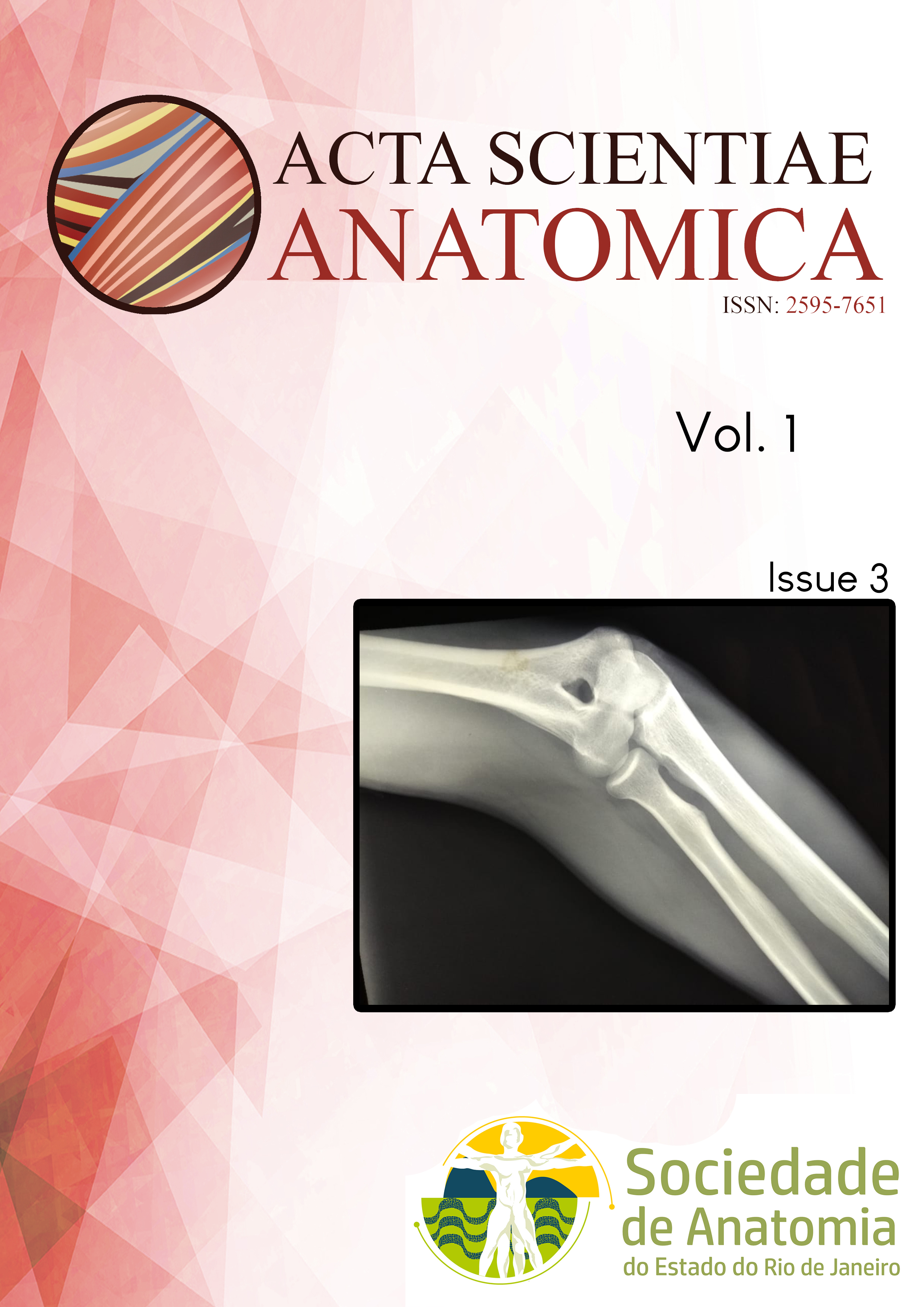Incidence of sutural bones at asterion in dry human skulls in Northeast Brazil
DOI:
https://doi.org/10.65053/asa20190305Keywords:
anatomy, asterion, skull, brazilAbstract
Introduction: The asterion is a craniometric point in the norma lateralis of the skull situated at the junction between lambdoid, parietomastoid, and occipitomastoid sutures. The aim of this study is to assess the sutural morphology of the asterion and its distance from bony landmarks in human skulls from Northeast Brazil. Materials and Methods: 60 skull halves from individuals from Northeast Brazil were analyzed. The morphological variability of the asterion and measurements of the asterion to the root of the zygomatic arch (A-RZA), the tip of the mastoid process (A-TMP), the suprameatal crest (A-SMC), and the external occipital protuberance (A-EOP) were investigated. Results: Type I asterion was observed in 19 (31.67%) of the cases, and common more in males (18.34%). Type I occurred more on the left side in males (11.67%), whereas in females on the right side (8.34%). Type II asterion was occurred more in females (43.34%), and common more on the right side in both the genders. No statistical difference was found between the sides in the location of the A-RZA, A-TMP, A-SMC, and A-EOP. There was also no statistical difference between the right and left sides between the genders (p > 0.05). Conclusion: The Brazilian population has a high incidence of type I asterion, different from previous studies. This data may be of use when planning for surgical approaches to the skull and also when interpreting radiological images.
Downloads
Published
Issue
Section
License
Copyright (c) 2025 Acta Scientiae Anatomica

This work is licensed under a Creative Commons Attribution-NonCommercial-ShareAlike 4.0 International License.
This journal publishes open-access articles under the Creative Commons Attribution 4.0 International (CC BY 4.0) license. This permits use, sharing, adaptation, distribution, and reproduction in any medium or format, as long as appropriate credit is given to the authors and the source, a link to the license is provided, and any changes are indicated. License: https://creativecommons.org/licenses/by/4.0/








